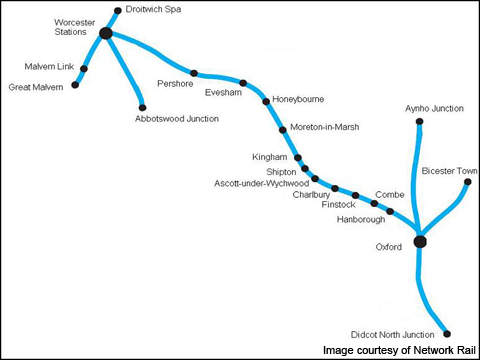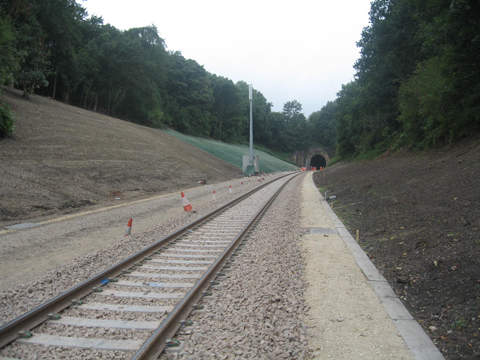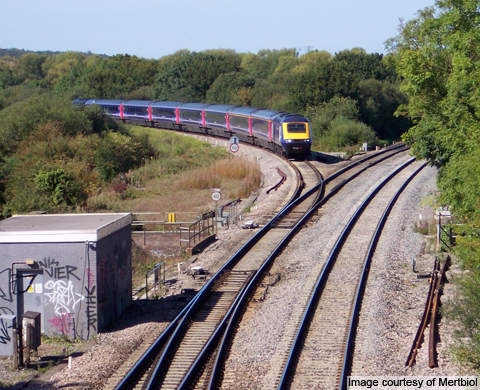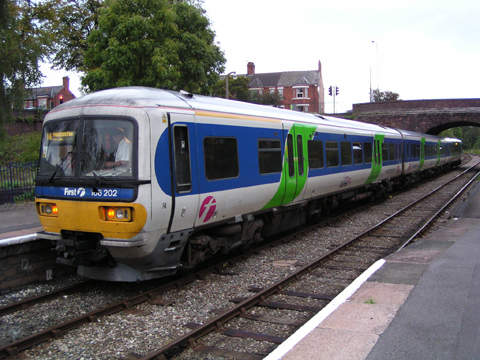The North Cotswold Improvement project is a track redoubling scheme that is currently being carried on the Cotswold Line in England.
The northern part of the Cotswold Line is a single. The redoubling scheme is intended to increase the train frequencies and cut train delays on the line.
The estimated cost of the project is £67m. An additional £3m has been invested to upgrade infrastructure facilities at stations along the route.
The project is being implemented by Network Rail and the operator First Great Western. The entire project has been funded by Network Rail.
Preparatory works started in July 2009 and continued for about six weeks. Redoubling works began in the second quarter of 2010 and are scheduled to be completed by the third quarter of 2011.
Line and routes
The Cotswold Line is 139km-long and operates between Oxford and Hereford in England. It provides an important link to the West Midlands, the Thames Valley and London.
Project
The Cotswold Line was originally a double track. In 1960s as a cost cut measure under Beeching’s plan, certain unprofitable sections of the route were completely removed and some converted to single tracks.
The existing single line is a much congested part of English railway. It follows a few sections of old south-bound and north-bound lines. A delay in one service has a cascading effect on other train services. The track is centred at certain sections on the route resulting in less track bed to lay new lines.
The project will redouble 20 miles of track to facilitate improved services while providing a solution for growth of future services. It also involves construction of new platforms at Charlbury, Ascott-under-Wychwood and Honeybourne stations, level crossing upgrades at Littleton, Badsey, Chipping Campden, Blockley and Ascott-under-Wychwood. Stations at Kingham, Moreton-in-Marsh and Evesham will also be upgraded as part of the improvement programme.
Network Rail awarded a £1m civil works contract to Birse Rail in June 2010. The contract calls for the construction of a bridge, an embankment and two under-bridge water proofing works at stations between Pershore in Worcestershire and Moreton-in-Marsh, Gloucestershire.
Infrastructure
The project infrastructure includes new platforms with step-free access, new and improved lighting and real-time digital passenger information systems at Charlbury, Ascott-under-Wychwood and Honeybourne stations.
The platforms and footbridge at Charlbury station are being constructed by Amey, infrastructure service provider in Oxford.
Modernisation of station facilities at Kingham, Moreton-in-Marsh and Evesham include installation of new digital information systems, waiting shelters, improved lighting and laying of new bicycle tracks. New barriers and lighting will be installed at level crossings.
Signalling and communications
The existing track has token exchange signalling system along the route. It is being upgraded with new axle counter technology.
Signalling control panels at Evesham and Ascott-under-Wychwood stations will have digital equipment.
Construction update
The project is being executed in two phases. Phase I involves works on the route from Chalbury to Ascott-under-Wychwood and Evesham. Phase II involves improvement works from Moreton-in-Marsh to Evesham. The phase II plan was finalised in April 2010.
Pre-construction works were carried out in 2009 and involved repositioning of 10 miles of track to create space for new tracks, laying of 21 miles of new surface concrete cable route, installation of 30 miles of new cable and relocation of 60 sets of signal equipment.
The existing track was re-aligned and a new second track was laid in the 118m-long Chipping Camden Tunnel in September 2009. A unique track construction train was used for this purpose. In addition, a new 2,000m-long drain was constructed to alleviate flooding in the tunnel. It involved excavation of more than 12,000t of material.
The single track Honeybourne Bridge was replaced with a new 9.3m-wide bridge to accommodate double track in 2010. The new bridge is twice the size of the old one and has a life span of 120 years. A self-propelled modular transporter was used to remove and install the bridges.
Level crossing upgrades at Littleton and Badsey were also completed in 2010.
Phase II involves redoubling of tracks, which are currently underway. About 90% of the work is being carried out at nights to avoid disrupting the trains travelling the line during day.











